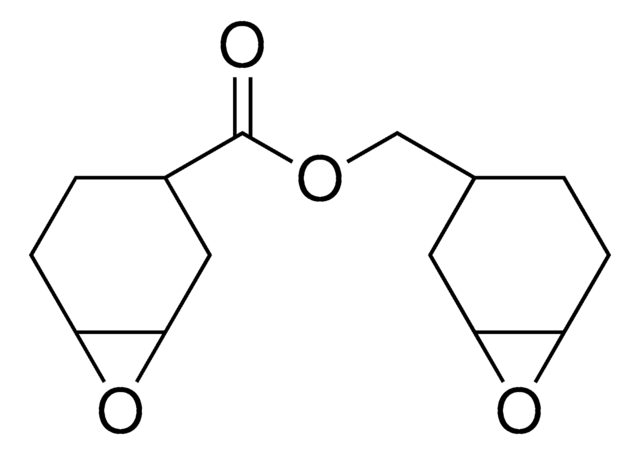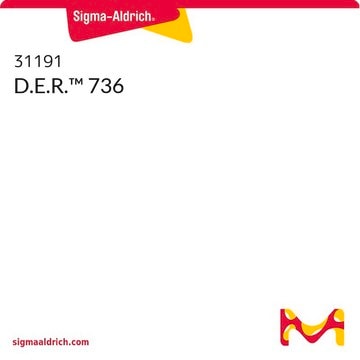430234
Bisphenol A diglycidyl ether, brominated
mol wt 350-450 g/epoxide by perchloric acid method
Synonym(s):
4,4′-(1-Methylethylidene)bis[2,6-dibromophenol] polymer with (chloromethyl)oxirane, 4,4′-(1-methylethylidene)bis(2,6-dibromophenol), Tetrabromobisphenol A-epichlorohydrin polymer
About This Item
Recommended Products
form
solid
Quality Level
mol wt
350-450 g/epoxide by perchloric acid method
extent of labeling
48 wt. % Br
viscosity
1,800 cSt(lit.)
mp
55-65 °C (lit.)
transition temp
softening point 55-65 °C (Durrans)
solubility
a variety of ketone, aromatic hydrocarbon and ether alcohol solvents: soluble
SMILES string
Brc2c(c(cc(c2)C(C)(C)c3cc(c(c(c3)Br)O)Br)Br)O.ClCC1OC1
InChI
1S/C15H12Br4O2.C3H5ClO/c1-15(2,7-3-9(16)13(20)10(17)4-7)8-5-11(18)14(21)12(19)6-8;4-1-3-2-5-3/h3-6,20-21H,1-2H3;3H,1-2H2
InChI key
DEGGCMXJUHYWMD-UHFFFAOYSA-N
General description
Application
Physical properties
Signal Word
Warning
Hazard Statements
Precautionary Statements
Hazard Classifications
Eye Irrit. 2 - Skin Sens. 1
Storage Class Code
11 - Combustible Solids
WGK
WGK 3
Flash Point(F)
235.4 °F - closed cup
Flash Point(C)
113 °C - closed cup
Personal Protective Equipment
Choose from one of the most recent versions:
Already Own This Product?
Find documentation for the products that you have recently purchased in the Document Library.
Customers Also Viewed
Our team of scientists has experience in all areas of research including Life Science, Material Science, Chemical Synthesis, Chromatography, Analytical and many others.
Contact Technical Service




![Bis[4-(glycidyloxy)phenyl]methane mixture of isomers](/deepweb/assets/sigmaaldrich/product/structures/915/436/edb8eab6-834e-4238-a904-bf72c573b686/640/edb8eab6-834e-4238-a904-bf72c573b686.png)



